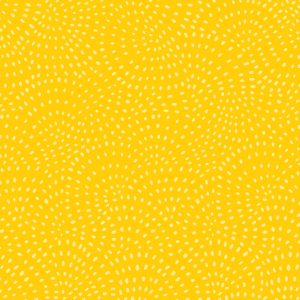
Quilt Calculator
Estimate Fabric Requirements for your next Quilt!
Quickly determine the fabric requirements for your next quilt! Simply select your quilt and block dimensions, and let our calculator provide you with estimated measurements for efficient fabric planning!
We’d love to hear any feedback or suggestions you might have so we can improve the calculator!
Select a quilt size preset from the dropdown or enter your custom quilt size to see the estimated fabric requirements for your quilt. Then, select specific block sizes for the quilt size to see how many blocks will make up your quilt.
Quilt Calculator
Block Calculator (Broad Common Blocks)
Disclaimer
This tool provides estimates for fabric requirements and block counts. Actual requirements may vary based on individual quilting techniques and preferences. We hope you find this tool useful for calculating binding & backing requirements for your next quilt. The Block Calculator is more experimental and uses common quilt blocks. The fabric calculations can include optional seam allowances and an extra 8 inches for quilting if selected. Always purchase slightly more fabric than estimated to allow for variations and potential errors. If you believe this calculator isn't working as intended, if the calculations are absurdly incorrect, or have suggestions or ideas to add more common blocks, please contact [email protected] with any feedback.
Math Explanation
How the Calculations Work
Understanding how the fabric requirements and block counts are calculated can help you make informed decisions for your quilting projects. Here's a simple breakdown:
Quilt Top:
To determine the amount of fabric needed for the quilt top, we start by considering the size of your quilt. If you choose to include an extra 8 inches for quilting and trimming, we add this to both the width and height of your quilt. Additionally, if you opt to include a 1/4-inch seam allowance, we add half an inch to both dimensions. We then calculate the total area by multiplying these adjusted dimensions and convert this measurement from square inches to square yards based on the width of your fabric.
Backing:
For the backing fabric, we determine how many fabric widths (known as Widths of Fabric or WOFs) are needed to cover the width of your quilt. This calculation takes into account any extra inches added for quilting and seam allowances. We then multiply the number of WOFs by the adjusted height of your quilt to find the total length of fabric required. This length is converted from inches to yards.
Binding:
The binding fabric is calculated by adding the width and height of your quilt and then multiplying by two to cover all sides. We then divide this total length by the width of your fabric divided by the binding width to determine the number of strips needed. Finally, we calculate the total fabric for binding by multiplying the number of strips by the binding width and converting the measurement from inches to yards.
Block Calculation:
To figure out how many blocks you'll need for your quilt, we divide the quilt's width and height by the size of the blocks you select. If you've chosen to include a seam allowance for each block, we add half an inch to the block size before performing the division. We then round up the number of blocks across and down to ensure complete coverage and multiply these numbers to get the total number of blocks needed.
Example:
Let's say you have an 85-inch by 108-inch quilt and you're using 8.5-inch blocks (including seam allowances). Here's how the calculations would work:
- Quilt Top: Calculate the total area with extra inches and seam allowances, then convert to yards based on fabric width.
- Backing: Determine the number of fabric widths needed and convert the total length to yards.
- Binding: Calculate the total binding length, determine the number of strips required, and convert to yards.
- Blocks: Divide the quilt dimensions by the block size to find out how many blocks you need across and down, then multiply to get the total number of blocks.
This simple approach ensures you have enough fabric for your quilt top, backing, and binding, as well as the correct number of blocks to create a beautiful finished quilt.
For a Log Cabin block, typically each block consists of a central square surrounded by strips (logs). Assuming an 8" finished size (8.5" including seam allowances):
- Total Number of Blocks: Calculated by dividing the quilt width and length by the block size.
- Fabric Needed for Each Block: Includes a central square and various lengths of strips.
- Example: An 85"x108" quilt with 8.5" blocks will have 10 blocks across and 12 blocks down, resulting in 120 blocks total.
Each Half-square Triangle (HST) block is made by cutting a square fabric piece diagonally and sewing it to another to form a triangle. For each block:
- Squares Needed: 2 squares of fabric per HST.
- Example: For a 5" finished block size, you need two 6.5" squares (including seam allowances) per block.
- Total Fabric: Multiply the number of blocks by 2 and by the size of the squares.
An Hourglass block typically requires two pieces of fabric sewn together diagonally. Assuming a 6" finished size:
- Fabric Pieces Needed: 2 triangles per block.
- Fabric per Triangle: Approximately 6.5" fabric pieces (including seam allowances).
- Total Fabric: Multiply the number of blocks by 2 and by the fabric needed per triangle.
Irish Chain blocks are typically created using strips of fabric sewn together in a chain-like pattern. Assuming a 4" finished size:
- Strips Needed: 4 strips per block.
- Fabric per Strip: Approximately 4.5" fabric pieces (including seam allowances).
- Total Fabric: Multiply the number of blocks by 4 and by the fabric needed per strip.
Pinwheel blocks are created by sewing together squares of fabric with diagonal cuts. Assuming an 8" finished size:
- Squares Needed: 4 squares per block.
- Fabric per Square: Approximately 8.5" fabric pieces (including seam allowances).
- Total Fabric: Multiply the number of blocks by 4 and by the fabric needed per square.
Rail Fence blocks are composed of alternating strips of fabric sewn together. Assuming a 6" finished size:
- Strips Needed: 3 strips per block.
- Fabric per Strip: Approximately 6.5" fabric pieces (including seam allowances).
- Total Fabric: Multiply the number of blocks by 3 and by the fabric needed per strip.
Simple Square blocks are straightforward, requiring just one square of fabric per block. Assuming a 5" finished size:
- Fabric per Square: Approximately 5.5" fabric pieces (including seam allowances).
- Total Fabric: Multiply the number of blocks by the fabric needed per square.









